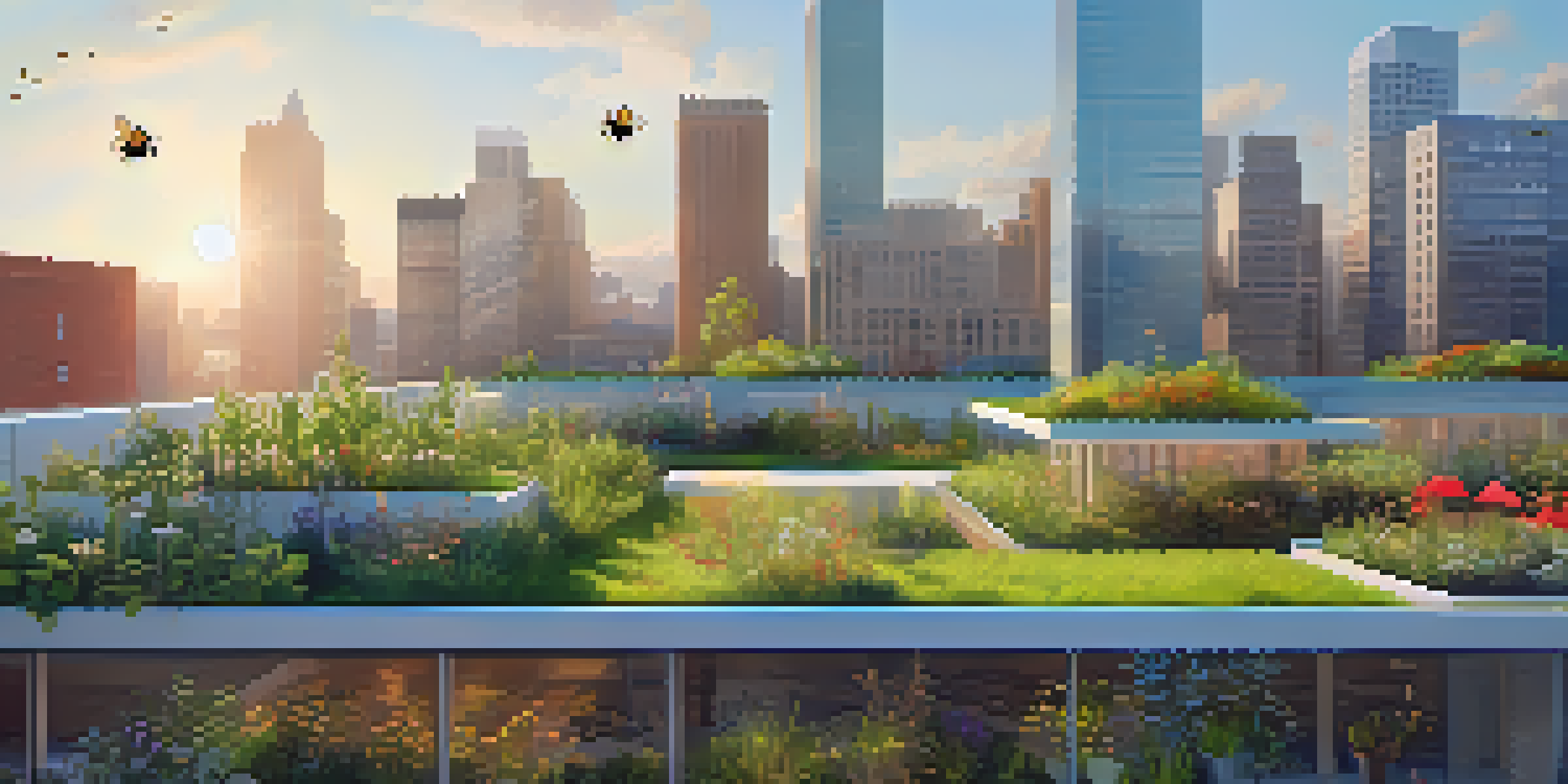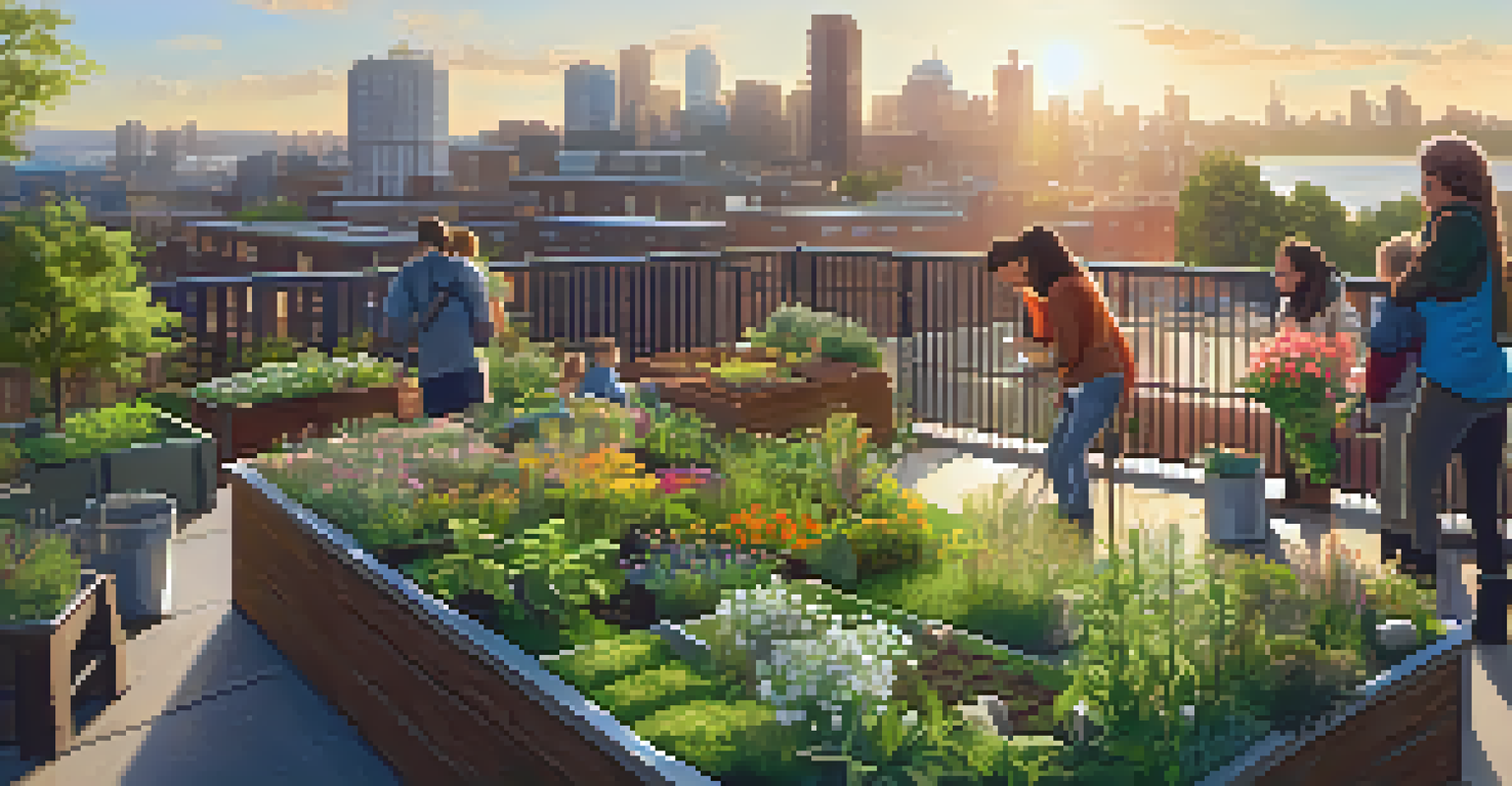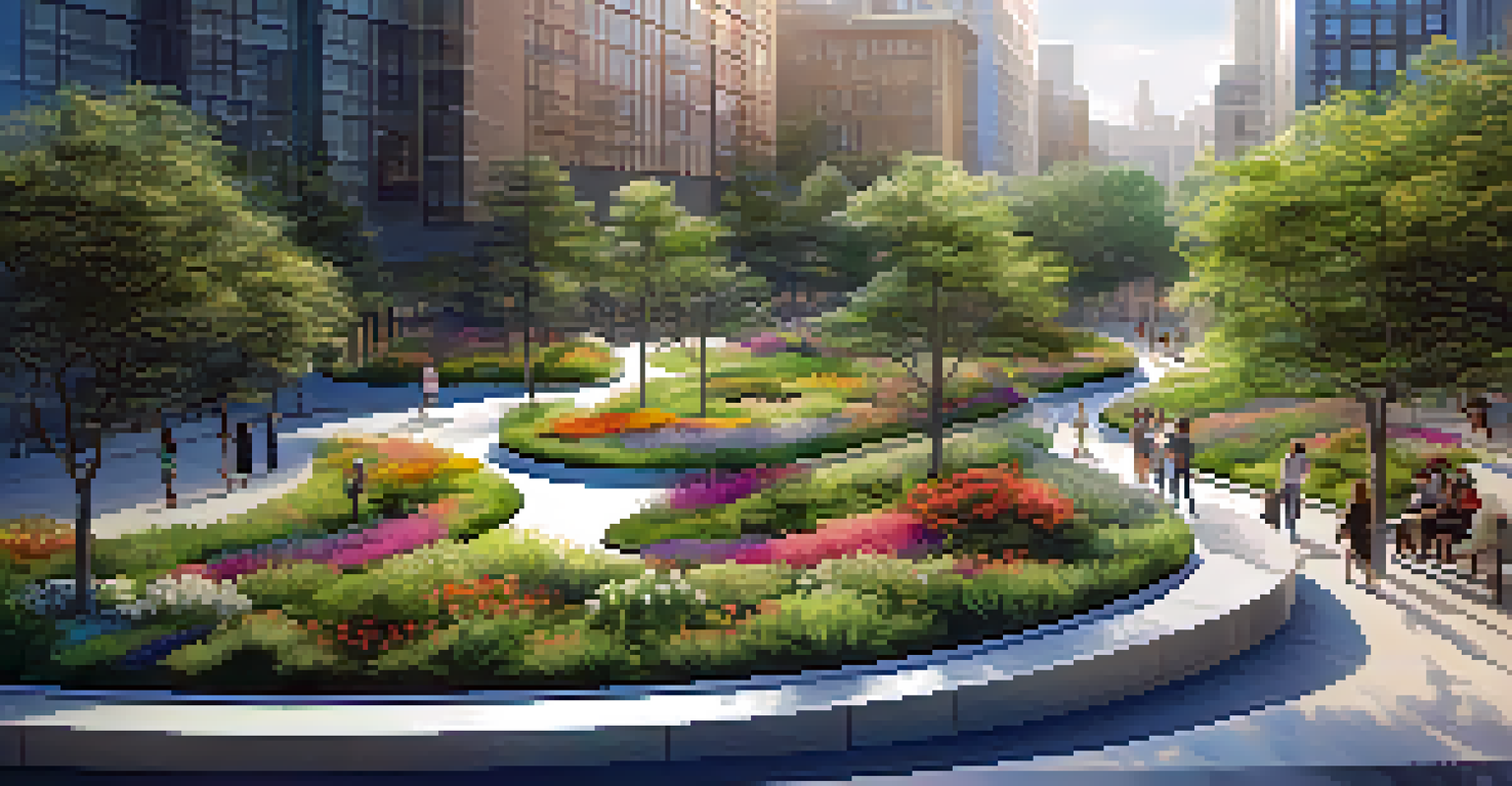San Francisco's Green Roofs: Benefits for Urban Biodiversity

What Are Green Roofs and Their Importance?
Green roofs are living roofs that incorporate vegetation and soil layers on building tops. They play a crucial role in urban environments, helping to mitigate the heat island effect, which is when urban areas become significantly warmer than their rural surroundings. By adding greenery to cityscapes, these roofs not only beautify buildings but also provide essential habitats for various species.
The best time to plant a tree was 20 years ago. The second best time is now.
In cities like San Francisco, where concrete dominates, green roofs offer a breath of fresh air—a literal and metaphorical one! They create micro-ecosystems that can support birds, insects, and other wildlife, thereby enhancing urban biodiversity. The importance of these spaces cannot be overstated, particularly as urban development continues to encroach on natural habitats.
Moreover, green roofs can improve air quality by filtering pollutants and absorbing carbon dioxide. This dual benefit—supporting biodiversity while also addressing climate change—makes them a vital component of any urban planning strategy aimed at sustainability.
Benefits of Green Roofs for Urban Biodiversity
Green roofs provide critical habitats for various species, including pollinators like bees and butterflies. By offering food sources and refuge, they help sustain these populations that are vital for plant reproduction and overall ecosystem health. In urban areas, where natural habitats are limited, green roofs function as essential stepping stones for wildlife.

Additionally, these roofs can support a range of plant species that might not thrive in the surrounding urban environment. By cultivating diverse flora, green roofs contribute to a more resilient ecosystem, promoting genetic diversity and increasing the overall stability of urban habitats. This diversity is crucial, as it helps ecosystems adapt to changes and stresses over time.
Green Roofs Boost Urban Biodiversity
Green roofs create vital habitats for pollinators and other species, enhancing urban biodiversity in areas where natural habitats are scarce.
Furthermore, green roofs can enhance the aesthetic value of buildings and neighborhoods, encouraging community engagement with nature. When residents see and interact with these green spaces, they are more likely to appreciate and advocate for biodiversity initiatives, ultimately fostering a culture of environmental stewardship.
San Francisco's Commitment to Green Roofs
San Francisco has been at the forefront of promoting green roofs as part of its broader sustainability goals. The city has implemented policies that encourage the installation of these roofs on new developments, showcasing their commitment to enhancing urban biodiversity. By providing incentives and resources, San Francisco aims to increase the number of green roofs across the city.
Nature does not hurry, yet everything is accomplished.
In addition to regulatory support, local organizations and community groups actively promote green roofs through educational programs and workshops. These initiatives help residents understand the benefits of green roofs and inspire them to advocate for more green spaces in their neighborhoods. The collaboration between the city and its residents is essential for driving this movement forward.
Moreover, the city has launched several pilot projects to demonstrate the effectiveness of green roofs in urban settings. These projects serve as models for other cities looking to implement similar strategies, showcasing how green roofs can lead to healthier urban ecosystems while also providing tangible benefits to the community.
Challenges in Implementing Green Roofs
While the benefits of green roofs are clear, several challenges remain in their implementation. One significant hurdle is the initial cost of installation, which can deter property owners from investing in these environmentally friendly solutions. However, it's essential to view this as a long-term investment, as the benefits—such as energy savings and increased property value—can outweigh the upfront costs.
Another challenge is the need for regular maintenance to ensure the health and sustainability of green roofs. Property owners must be willing to commit time and resources to care for these spaces, which may require specialized knowledge about plant care and ecosystem management. This ongoing maintenance is crucial for preserving the biodiversity that green roofs support.
San Francisco Leads Green Roof Initiatives
San Francisco promotes green roofs through supportive policies and community engagement, aiming to increase green spaces and biodiversity across the city.
Lastly, there can be regulatory hurdles that vary by city or neighborhood, complicating the process of installation. Navigating these regulations can be daunting for developers and property owners, but with the right support and resources, these challenges can be overcome, leading to more widespread adoption of green roofs.
Case Studies: Successful Green Roof Projects
San Francisco is home to several successful green roof projects that serve as inspiring examples for other cities. One notable case is the California Academy of Sciences, which features a stunning living roof that supports a variety of plant species and provides habitats for local wildlife. This project not only enhances the building's sustainability but also educates visitors about the importance of urban biodiversity.
Another example is the Salesforce Park atop the Salesforce Transit Center, which boasts a lush, green landscape that attracts both residents and tourists. This park serves as an urban oasis, offering a space for relaxation while also supporting local ecosystems. Its design emphasizes the potential of green roofs to create multifunctional spaces that contribute positively to city life.
These case studies highlight the effectiveness of green roofs in promoting urban biodiversity and enhancing community engagement. They demonstrate that, when thoughtfully designed and maintained, green roofs can transform urban spaces into vibrant ecosystems that benefit both people and wildlife.
Encouraging Community Involvement in Green Roofs
Community involvement is crucial for the success of green roofs in urban areas. Engaging residents in the planning and maintenance of these spaces fosters a sense of ownership and responsibility, encouraging them to take an active role in supporting local biodiversity. Workshops and volunteer days can help individuals learn about gardening and ecology while also making tangible contributions to their neighborhoods.
Moreover, local schools can play a vital role in promoting green roofs through educational programs that integrate environmental science with hands-on experience. By involving students in the process, schools can cultivate a generation that values and protects urban biodiversity. Projects like school green roofs not only enhance learning but also create beautiful, functional spaces for the community.
Challenges of Green Roof Implementation
Despite their benefits, the initial costs and maintenance requirements pose significant challenges to the widespread adoption of green roofs.
Social media and community events can also be powerful tools for spreading awareness about the benefits of green roofs. By sharing success stories and showcasing local projects, communities can inspire others to consider green roofs as a solution for urban biodiversity challenges. This collective effort can lead to a broader movement toward sustainable urban living.
The Future of Green Roofs in Urban Planning
As cities continue to grow and evolve, integrating green roofs into urban planning will become increasingly important. The need to address climate change, habitat loss, and urban heat islands is more urgent than ever, making green roofs a promising solution. By prioritizing these spaces in future developments, cities like San Francisco can create more resilient ecosystems that support both biodiversity and human well-being.
Innovations in technology and design will also play a significant role in the future of green roofs. New materials and methods for installation can reduce costs and maintenance needs, making green roofs more accessible to a broader audience. Additionally, advancements in monitoring systems can help property owners track the health of their green roofs, leading to better management practices.

Ultimately, the future of urban biodiversity hinges on our commitment to creating and maintaining green spaces. By championing green roofs, cities can foster a culture of sustainability that not only protects local ecosystems but also enriches the lives of their residents. Together, we can build a greener, more vibrant urban landscape.